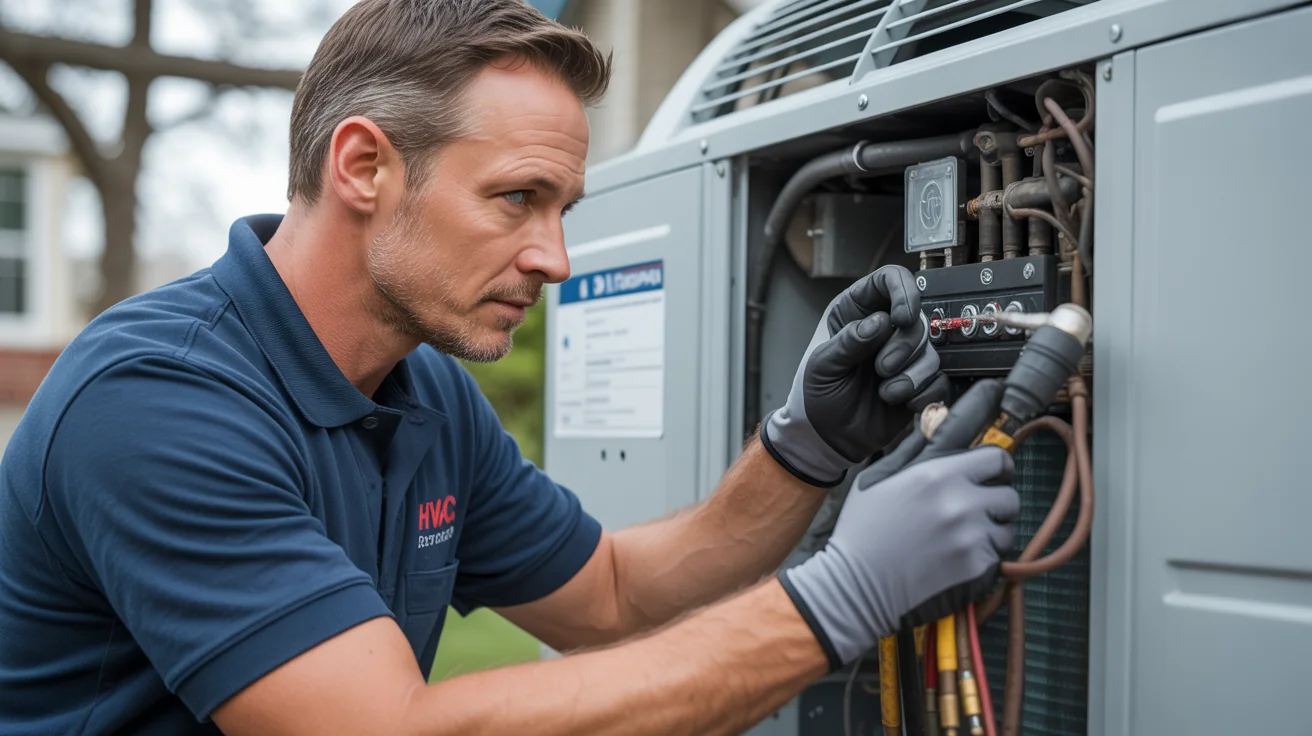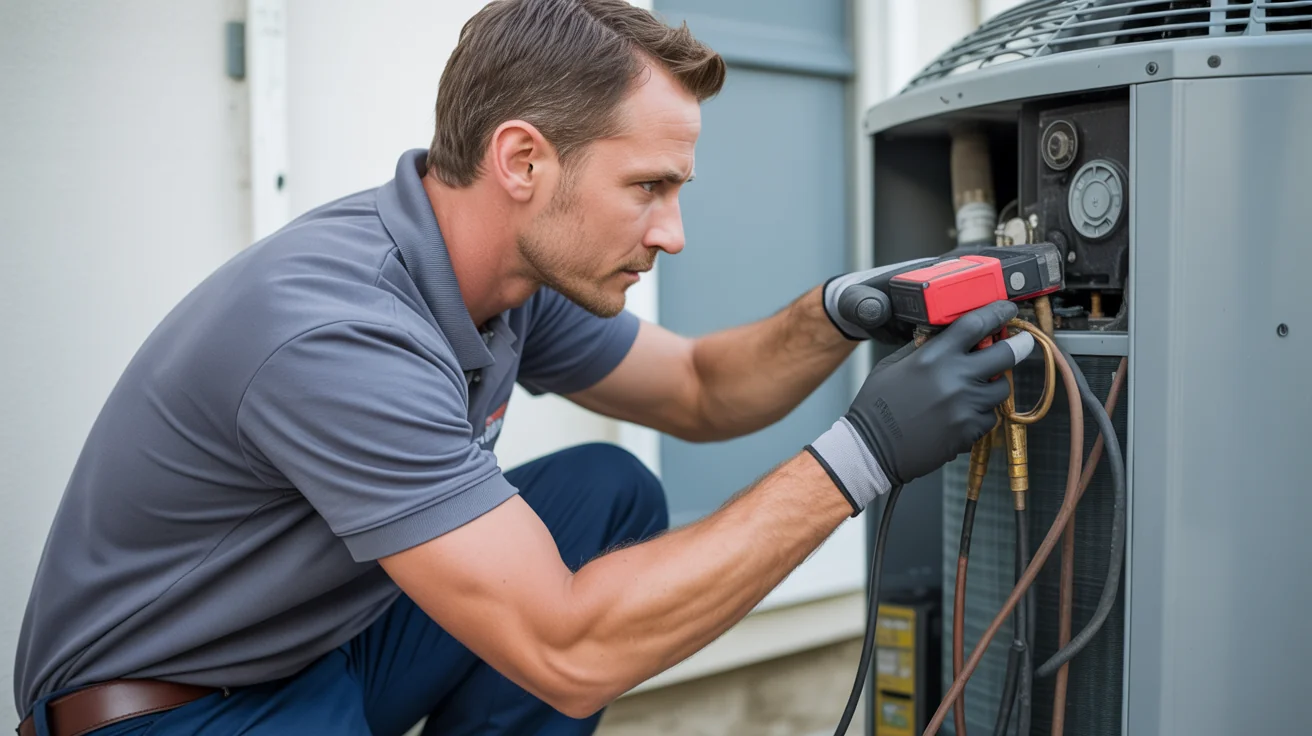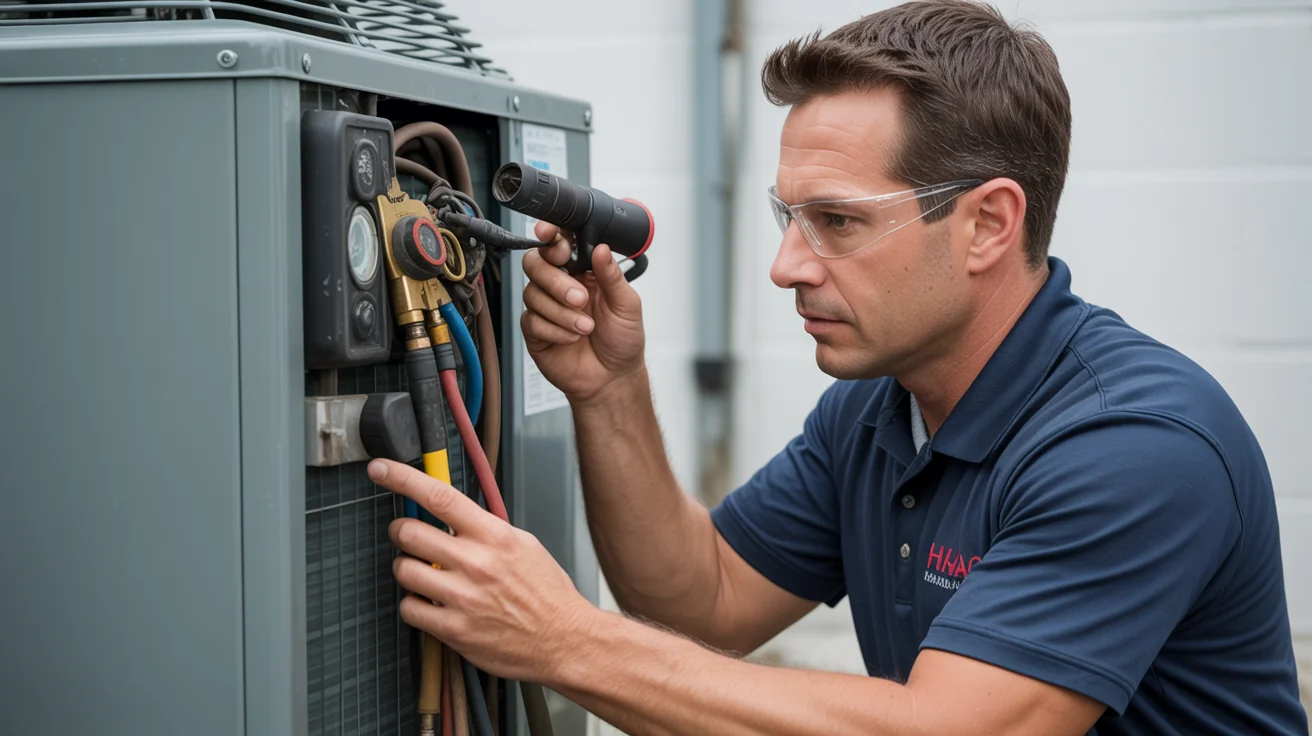North Texas HVAC Maintenance Schedule (2025): Complete Year-Round Guide for Optimal Performance
Complete year-round HVAC maintenance schedule for North Texas climate. Monthly tasks, seasonal preparation, and professional service schedules for maximum efficiency.

The Maintenance Schedule That Prevents 92% of HVAC Disasters
Related: Maintenance Schedule
Here’s what I wish every North Texas homeowner understood: The difference between a $200 annual maintenance plan and a $5,000 emergency replacement often comes down to following a simple schedule.
I’ve tracked this over 15 years: families who follow a year-round maintenance schedule avoid 92% of major equipment failures. Their systems last 8-12 years longer. Their energy bills are 20-30% lower. They sleep through heat waves and cold snaps while their neighbors are calling emergency repair services.
This isn’t theoretical - it’s what I’ve seen happen thousands of times. The schedule below is built from real North Texas climate data and real equipment failures. Follow it, and you’ll avoid most of the expensive disasters I respond to every day.
Why North Texas Eats HVAC Systems for Breakfast
Our climate is uniquely brutal on equipment. Here’s what your system faces that would cripple equipment in milder climates:
Nine months of abuse means your system runs hard from March through November, sometimes beyond normal seasons. Thermal torture occurs when 105°F summer days are followed by 25°F winter nights, stressing components beyond design limits. Airborne assault includes cedar pollen thick enough to see and dust storms that turn your filter brown in a week. Weather warfare brings hail, tornadoes, and ice storms targeting your expensive outdoor equipment. Humidity hell creates perfect conditions for mold, corrosion, and electrical failures throughout the year.
Monthly HVAC Maintenance Tasks
Every Month: Essential System Checks (30 minutes)
Filter Inspection and Replacement
- Check air filters monthly during peak seasons
- Replace 1-inch filters monthly, 4-inch filters every 3 months
- Mark calendar for consistent replacement schedule
- Keep spare filters on hand
Thermostat Operation Verification
- Test heating and cooling modes
- Verify temperature accuracy with separate thermometer
- Check battery levels in programmable thermostats
- Clean thermostat housing and sensors
Visual System Inspection
- Inspect outdoor unit for debris or damage
- Check indoor unit area for water leaks or unusual sounds
- Ensure all vents and returns are unobstructed
- Look for signs of pest activity or nesting
Seasonal Maintenance Schedule
Spring Preparation (March - April)
Cooling System Startup Checklist
- Professional system inspection and tune-up
- Coil cleaning (evaporator and condenser)
- Refrigerant level check and adjustment
- Electrical connection inspection and tightening
- Thermostat calibration
- Ductwork inspection for leaks or damage
- Drain pan and condensate line cleaning
- System performance testing
DIY Spring Tasks
- Clean outdoor unit surroundings (3-foot clearance)
- Trim vegetation away from condenser unit
- Check and clean air vents and registers
- Test emergency shut-off switches
- Inspect insulation around refrigerant lines
Warning Signs That Require Professional Service:
- Unusual noises during startup
- Insufficient cooling or uneven temperatures
- High humidity levels indoors
- Increased energy bills
- Frequent cycling on/off
Summer Monitoring (May - September)
Peak Season Maintenance
- Weekly outdoor unit inspection
- Monthly filter replacement
- Condensate drain monitoring
- Energy usage tracking
- Indoor air quality assessment
Heat Stress Prevention
Keep your outdoor unit shaded but well-ventilated to reduce heat stress during peak summer operation. Avoid landscaping that blocks airflow around the condenser unit, as proper air circulation is critical for efficiency. Monitor refrigerant line insulation regularly, as deteriorated insulation reduces system performance and increases energy costs. Check for ice formation on the indoor unit, which indicates airflow or refrigerant problems requiring immediate attention. Ensure proper attic ventilation to reduce heat load on your entire system.
Emergency Preparedness
Know the location of all electrical shut-offs for your HVAC system before emergencies occur. Keep your HVAC contractor’s contact information easily accessible, including after-hours emergency numbers. Develop a backup cooling plan for extreme heat days when your system might fail or struggle to keep up. Monitor weather alerts for severe storm warnings that could damage outdoor equipment or cause power outages.
Fall Preparation (October - November)
Related: Fall Preparation
Heating System Startup Checklist
- Professional heating system inspection
- Heat exchanger examination
- Gas connections and pressure testing
- Ignition system cleaning and adjustment
- Safety control testing
- Flue and venting inspection
- Ductwork sealing and insulation check
- Carbon monoxide detector testing
DIY Fall Tasks
- Clean and inspect heating vents
- Test heating system operation before cold weather
- Reverse ceiling fan direction
- Check and replace humidifier filters
- Inspect and clean fireplace damper and chimney
Critical Safety Inspections:
- Carbon monoxide detector functionality
- Gas leak detection around connections
- Proper venting and exhaust operation
- Emergency shut-off accessibility
Winter Monitoring (December - February)
Cold Weather Maintenance
- Monthly heating system performance checks
- Humidification system maintenance
- Ice dam prevention measures
- Backup heating source readiness
Freeze Protection
Insulate exposed pipes and outdoor units to prevent freeze damage during North Texas cold snaps. Maintain consistent indoor temperatures rather than allowing dramatic setbacks that stress your system and risk pipe freezing. Know the location of all pipes and shut-off valves in case emergency action is needed. Keep emergency heating supplies available, including portable heaters and extra blankets for power outages.
Energy Efficiency Optimization
Seal air leaks around windows and doors to reduce heating load and improve system efficiency. Add weatherstripping where needed to prevent conditioned air loss and outdoor air infiltration. Optimize thermostat programming for winter schedules that account for your family’s daily routines and absence periods. Monitor and adjust humidity levels between 30-50% for optimal comfort and efficiency while preventing condensation problems.
Professional Maintenance Schedule
Bi-Annual Professional Services
Spring Tune-Up (March-April)
- Complete cooling system inspection
- Coil cleaning and refrigerant service
- Electrical system testing
- Performance optimization Cost: $150-$250 is an important factor to consider.
Fall Tune-Up (October-November)
- Complete heating system inspection
- Safety system testing
- Combustion analysis
- Efficiency optimization Cost: $120-$200 is an important factor to consider.
Annual Professional Services
Comprehensive System Inspection
- Ductwork assessment and sealing
- Indoor air quality testing
- Energy efficiency audit
- Equipment life expectancy evaluation Cost: $200-$350 is an important factor to consider.
When to Schedule Emergency Service
Immediate Professional Attention Required:
Gas odors or suspected leaks require immediate professional attention and evacuation if necessary. Complete system failure during extreme weather creates emergency situations requiring priority service response. Electrical issues or burning smells indicate potentially dangerous conditions that need immediate professional diagnosis. Water leaks or flooding around HVAC equipment can cause extensive damage and safety hazards. Carbon monoxide alarm activation requires immediate evacuation and emergency service to locate and eliminate the source.
Monthly Maintenance Calendar
January
- Replace air filters
- Check heating system operation
- Monitor humidity levels
- Inspect for ice damage
February
- Service humidifier system
- Check attic insulation
- Test emergency heat settings
- Schedule spring tune-up appointment
March
- Professional spring inspection
- Clean outdoor unit area
- Test cooling system startup
- Replace thermostat batteries
April
- Coil cleaning service
- Refrigerant level check
- Ductwork inspection
- Prepare for cooling season
May
- Weekly outdoor unit monitoring
- Check condensate drainage
- Optimize cooling settings
- Track energy usage
June
- Peak season performance check
- Extra filter changes if needed
- Storm preparation measures
- Indoor air quality assessment
July
- Mid-season system evaluation
- Heat stress prevention
- Backup cooling plan review
- Professional check if needed
August
- Continued peak monitoring
- Prepare for fall transition
- Energy efficiency review
- Schedule fall service
September
- Transition season preparation
- Heating system pre-check
- Fall maintenance planning
- Ductwork preparation
October
- Professional fall inspection
- Heating system startup
- Safety system testing
- Winter preparation
November
- Heat exchanger inspection
- Carbon monoxide testing
- Humidification setup
- Cold weather readiness
December
- Winter operation monitoring
- Freeze protection measures
- Holiday schedule adjustments
- Year-end system review
Energy-Saving Tips Throughout the Year
Thermostat Optimization
- Use programmable or smart thermostats
- Adjust temperatures when away from home
- Take advantage of natural heating and cooling
- Maintain consistent temperature settings
System Efficiency Improvements
- Seal and insulate ductwork
- Upgrade to high-efficiency air filters
- Install zoning systems for large homes
- Consider variable-speed equipment upgrades
Home Envelope Optimization
- Improve insulation in attic and walls
- Seal air leaks around doors and windows
- Install energy-efficient windows
- Add weatherstripping where needed
Warning Signs That Indicate Professional Service Needed
Immediate Attention Required
- Strange or loud noises during operation
- Burning or gas odors
- Complete system failure
- Water leaks or flooding
- Electrical issues or sparking
Schedule Service Soon
- Uneven heating or cooling
- Higher than normal energy bills
- Frequent cycling on and off
- Poor indoor air quality
- Thermostat malfunctions
Monitor Closely
Watch for gradual efficiency decline that occurs over time and may not trigger immediate concern but indicates developing problems. Notice minor unusual sounds that could signal early component wear before they become major failures. Track slightly higher energy usage that may indicate reduced system efficiency requiring professional attention. Address occasional temperature fluctuations that could indicate control system problems or equipment stress. Pay special attention to aging equipment (10+ years) that requires more frequent monitoring and preventive care.
Frequently Asked Questions
How often should I change my HVAC filter in North Texas?
Change 1-inch filters monthly during peak seasons (May-September, December-February) and every 2 months during mild weather. Change 4-inch filters every 3 months year-round due to our high dust and pollen levels.
Is professional maintenance really necessary if I do DIY tasks?
Yes, professional maintenance is essential even with diligent DIY care. Professionals have specialized tools and training to detect problems early, improve system performance, and maintain warranties.
What’s the best time to schedule professional maintenance?
Schedule cooling system maintenance in March-April before peak summer demand, and heating maintenance in October-November before winter. This make sures optimal performance and availability.
How much should I budget for annual HVAC maintenance?
Budget $300-$500 annually for professional maintenance, including bi-annual tune-ups and any minor repairs. This investment typically saves $1,500+ in prevented major repairs.
What if I miss some monthly maintenance tasks?
Don’t let missed tasks snowball. Resume your schedule immediately and consider scheduling a professional inspection to make sure no issues developed during the gap.
Equipment Lifespan Extension Strategies
Proper Operation Practices
Avoid frequent temperature adjustments that stress your system and increase energy consumption while reducing comfort. Use appropriate thermostat settings for the season and maintain consistent temperatures rather than dramatic setbacks. Never block vents or returns with furniture, drapes, or storage items that restrict airflow and reduce efficiency. Run your system consistently rather than cycling frequently, which causes more wear than steady operation.
Environmental Protection
Provide adequate clearance around outdoor units, maintaining at least 3 feet of clear space for proper airflow and service access. Protect equipment from severe weather with appropriate covers during dormant seasons and secure mounting during storms. Maintain proper drainage around equipment to prevent water damage and foundation settling. Keep pets away from equipment as they can damage fins, electrical connections, and refrigerant lines.
Component Care
Replace worn parts promptly to prevent cascade failures that damage multiple components and increase repair costs. Use high-quality replacement filters appropriate for North Texas conditions rather than cheap alternatives that provide inadequate protection. Keep electrical connections clean and tight to prevent arcing, corrosion, and component failure. Lubricate moving parts as recommended by manufacturers to prevent premature wear and ensure smooth operation.
Conclusion: Your Path to Long-Term HVAC Success
Following this complete North Texas HVAC maintenance schedule make sures optimal system performance, prevents costly breakdowns, and maximizes your equipment investment. The combination of monthly DIY tasks and professional seasonal maintenance provides complete protection against our challenging climate conditions.
Remember: Consistent maintenance is far less expensive than emergency repairs or premature system replacement. Start your maintenance routine today and enjoy reliable comfort for years to come.
Need Professional HVAC Maintenance?
Jupitair HVAC provides complete maintenance services throughout North Texas, including Frisco, Plano, McKinney, Allen, and surrounding communities. Our certified technicians make sure your system operates at peak efficiency year-round.
Call (940) 390-5676 for professional HVAC maintenance scheduling or schedule service online today.
Need Professional HVAC Service?
Our certified technicians are ready to help with any HVAC needs in North Texas




